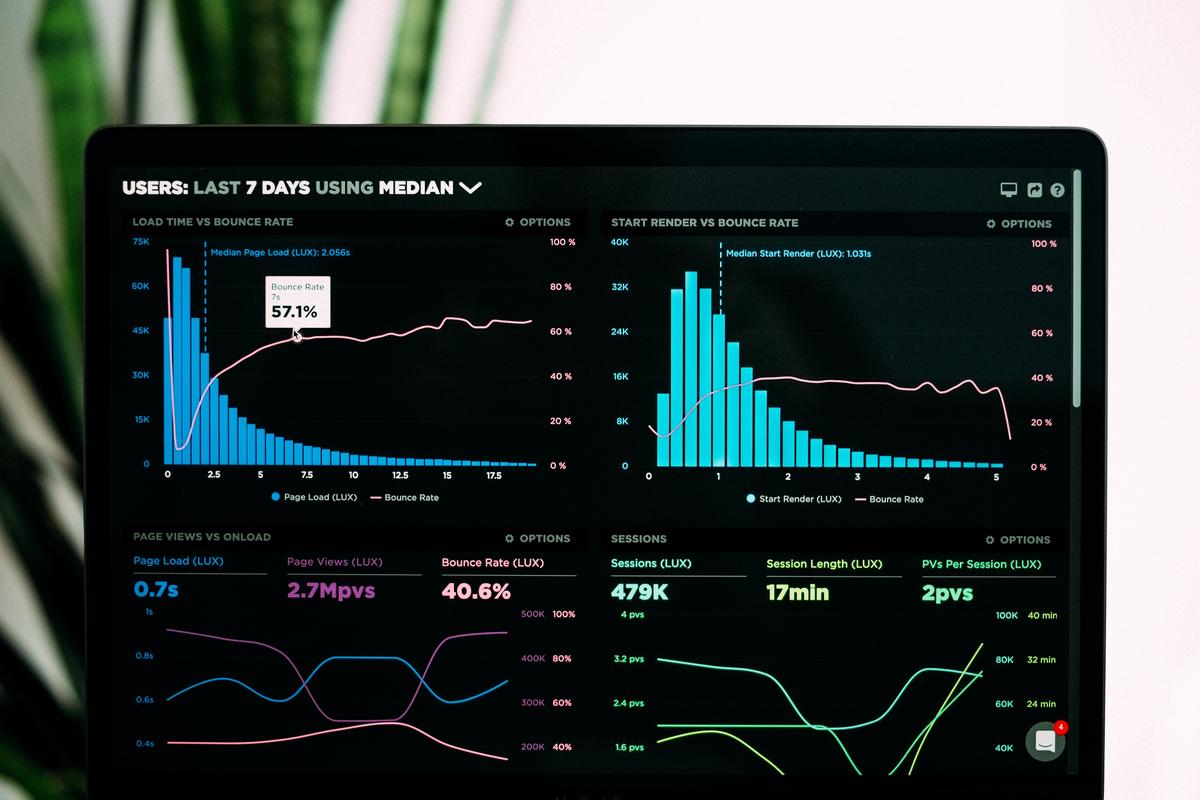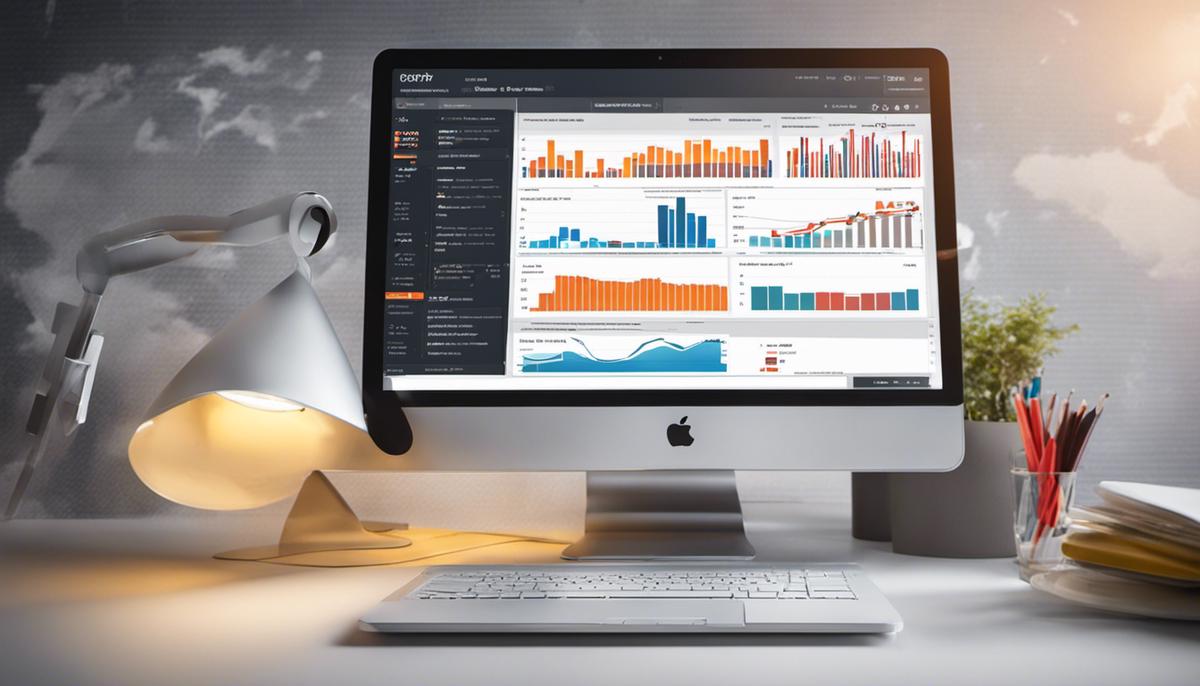In the ever-evolving landscape of digital marketing, Pay-Per-Click (PPC) advertising strategies have emerged as an essential toolkit for businesses aiming to leverage the power of internet searches. PPC campaigns, if managed well, can be an effective way to drive traffic, increase conversions, and ultimately, boost sales. The following essay embarks on a journey to demystify PPC advertising, taking readers through its fundamental concepts, strategic development, key metrics interpretation, bid management practices, and inspiring real-world examples. Brace yourself for an enlightening excursion into an aspect of digital marketing that can be profitable for businesses, when done right.
Basics of PPC Advertising
Understanding PPC Advertising
Pay-Per-Click (PPC) Advertising is a type of online marketing strategy where advertisers pay a fee each time their ads are clicked by online users. Unlike traditional advertising where businesses pay for the placement of their ads, PPC is essentially a way of ‘buying’ visits to a site rather than ‘earning’ them organically. The goal is to lead the person viewing it to click through to the advertiser’s website where they can complete valuable actions such as purchasing goods or services.
Benefits of PPC Advertising
One of the key benefits of PPC advertising is that it can provide quick results. Organic search engine optimization (SEO) techniques can take months to yield noticeable increases in web traffic and sales, whereas PPC advertising can start bringing in traffic as soon as the ad goes live. Additionally, PPC provides precise targeting options. Advertisers can tailor their campaigns based on keywords, demographics, location, and the time of day, reaching the ideal audience as efficiently as possible.
The Role of PPC Advertising in Today’s Digital World
In the digital age, where consumers predominantly turn to search engines to find information, PPC advertising plays a pivotal role. PPC ads are often the first links online searchers see, especially on mobile screens where screen real estate is limited. Therefore, PPC advertising is an effective method for businesses to get in front of potential customers.
Concept of Cost-Per-Click
The Cost-Per-Click (CPC) is how much an advertiser pays each time someone clicks on their PPC ad. This cost can vary based on how competitive the keywords the advertiser is bidding on are. High-volume, competitive keywords often have higher CPCs, while less popular keywords typically cost less per click. The ultimate goal, however, is to ensure that the cost of acquiring a customer (CPC) is less than the revenue gained from that customer’s actions.
Understanding Search Advertising
Search advertising is a crucial aspect of PPC advertising. This form of advertising allows businesses to place ads in the sponsored results section of a search engine’s results page. When users perform a search using keywords related to what the business offers, the ad will appear at the top of the search results, increasing visibility and the chance of a click-through.
A Key Ingredient of Effective Digital Marketing
For a number of compelling reasons, PPC, or Pay-Per-Click, advertising proves to be a vital component of a successful digital marketing strategy. As a primary perk, it yields immediate results and quantifiable data, providing organizations the ability to swiftly assess the impact of their campaigns. Furthermore, it enhances SEO initiatives and content marketing, with PPC ads effectively funneling traffic towards optimized landing pages and valuable online content. Finally, it enables businesses to manage their advertising expenses through daily budget setting and capping CPCs. The combination of fast results, measurable metrics, and cost management capabilities makes PPC advertising an invaluable asset in the current digital marketing ecosystem.

Developing a Winning PPC Strategy
Grasping the Essentials of PPC Advertising Strategy
In the realm of digital marketing, Pay Per Click (PPC) advertising represents a model where each advertisement click incurs a certain fee for the advertiser. The construction of a successful PPC strategy calls for a mix of technical expertise, knowledge of marketing principles, and a thorough comprehension of the targeted audience’s needs and wants.
The Importance of Keyword Research
Keyword research stands at the base of any successful PPC campaign. It involves identifying and analyzing search terms that people enter into search engines relevant to your products or services. The aim is to discover what terms your potential customers are typing in, and then bidding on these keywords to attain a higher ranking in the search engine results page (SERP). Knowing which keywords are popular, relevant, and not overly competitive can strategically position your ads to reach your target audience.
Choosing the Right Keywords
Choosing the right keywords can make or break your PPC campaign. Select keywords that your potential customers are likely to use when searching for your products or services. Keyword selection should not be restricted to high-volume phrases alone; lower volume, more specific phrases, also known as long-tail keywords, can also drive significant traffic. These often have a higher intent, meaning it’s more likely the searcher is closer to a point-of-purchase.
The Role of Quality Score and Ad Rank
Quality Score and ad rank are two critical components in the Google AdWords PPC process. Quality Score is a measure of the relevance and quality of your keywords, landing pages, and PPC ads. It’s important because it determines your cost per click (CPC) and multiplies it by your maximum bid to decide your ad rank in the ad auction process.
Ad rank, on the other hand, is a value used to determine your ad position and whether your ads will show at all. It depends not only on your bidding strategy but also the quality of your ad content, the device being targeted, the expected impact of extensions, and other ad formats. A higher Quality Score can lead to better ad positions and lower costs, yielding a higher return on investment.
Creating Compelling Ad Copies
Crafting a compelling ad copy is paramount to a successful PPC campaign. Effective ad copies provide a clear message that aligns with your target audience’s search intent, includes keywords, and showcases your unique selling proposition. The copy should include a clear call-to-action, encouraging users to click through to your landing page.
Remember, your ad copy isn’t just about getting clicks, it’s about getting the right clicks. So, it’s crucial to prioritize relevance and clarity to help make sure your ad resonates with the audience and drives them to take the desired action.
Split testing, commonly called A/B testing, can also be remarkably useful in optimizing your PPC ads. Different headlines, display URLs, or calls to action can dramatically affect the click-through and conversion rates of your ads. So, it’s crucial to experiment with different versions to gauge what works best.
Continual Adaptation of Your PPC Strategy
Successful PPC (Pay-per-click) advertising is dependent on the continual evolution and refinement of your strategy. This involves tracking campaign results, implementing needed alterations, and keeping up with the latest industry trends for sustaining long-term PPC advertising success. Routine observation and modification can notably enhance your overall Return on Investment (ROI) and increase the efficacy of your PPC campaigns.

Photo by lukechesser on Unsplash
Understanding PPC Metrics and Analysis
Essential Understanding of PPC Metrics and Analytics
PPC advertising, where you purchase visits to your site rather than organically earning those visits, mandates a solid comprehension of PPC metrics and analytics. These help in developing a thriving advertising strategy. An array of metrics is available to advertisers to ascertain the success and profitability of their campaigns, thereby assisting decision-making in PPC advertising.
Clicks and Impressions
‘Clicks’ are one of the most straightforward metrics, representing the number of times users click on your advertised link. ‘Impressions,’ on the other hand, denote the number of times your ad is shown, regardless of whether users click on it or not. Monitoring both metrics allows you to evaluate the overall exposure of your advertisements.
Click-Through Rate (CTR)
CTR is a ratio showing how often people who see your ad end up clicking it. It’s determined by dividing the total number of clicks by impressions, providing you with a percentage. A higher CTR indicates that more people are clicking on your advertisement, suggesting it’s well-designed and relevant to their interests.
Conversion Rate
Conversion Rate is the number of users who completed the desired action (e.g., making a purchase, filling a form) divided by the total number of clicks. This metric is crucial as it allows you to measure the effectiveness of your campaign beyond just attracting clicks. A high conversion rate means your ad is not only compelling enough to click on, but also successful in convincing users to complete an action.
Cost per Conversion & Return on Investment (ROI)
Cost per Conversion (also known as Cost per Acquisition) indicates the average amount you’ve spent on each conversion. To calculate it, divide the total cost of your campaign by the total number of conversions.
ROI measures the profitability of your advertising efforts, showing the financial return on your ad spend. It’s calculated by subtracting the cost of investment (your ad spend) from the gain of investment and then dividing the result by the cost of investment. A positive ROI means you’re earning more than you’re spending on the campaign, making it a profitable endeavor.
Mastering PPC Metrics and Analysis Tools
Several tools are available to help you measure and analyze your PPC (Pay-Per-Click) advertising campaigns. A key player in this field is Google AdWords, offering detailed analytics for comprehensive advertising data.
In addition, there are third-party tools such as SEMRush and Moz; these not only provide in-depth PPC analysis but also allow for competitive research. They can uncover valuable information about your competitors’ advertising and bidding strategies, and highlight the most impactful keywords.
To understand what happens after a user clicks on your ad, you can use website analytics tools, like Google Analytics. These tools can give you insights into which pages are visited most, how long users stay, and their conversion patterns, amongst other valuable data.
Social media platforms, such as Facebook and Instagram, also offer their own built-in analytics for PPC advertising. Their metrics are specifically designed to measure social media engagement.
By grasping these PPC metrics and their significance, you can fine-tune your campaigns to increase their efficacy and maximize your return on investment.

Tips on PPC Bid Management
Navigating PPC Bid Management
PPC (Pay-Per-Click) bid management is a vital component of any digital strategy involving PPC advertising. It involves strategic control and adjustments of the amount you’re willing to pay for each click on your ad. Determining factors can include the competitiveness of a keyword, the time of day, and the quality of your ad and accompanying landing page.
Effective PPC Bid Management Strategies
One of the most essential strategies in PPC bid management is to start with a comprehensive keyword analysis. It’s pivotal to understand not only which specific keywords are most conducted to your business but also how competitive those keywords are. Choosing the right keywords can make a significant difference in both the cost and effectiveness of your PPC campaigns.
Another pivotal bid management strategy is to focus on keyword relevancy and Quality Score. This score is Google’s rating of the quality and relevance of your keywords, landing pages, and PPC campaigns. Higher Quality Scores can lead to more ad clicks at lower costs. Therefore, improving your Quality Score by creating highly relevant ads with compelling call-to-actions, optimized landing pages, and incorporating high-quality keywords can be a successful strategy.
Optimizing Your PPC Campaign
Optimizing your PPC campaign will also play a crucial role in managing your bids effectively. Monitoring the performance of your ads regularly is key. Review keyword performance, click-through rates, conversion rates and adjust your bids accordingly. It might also be beneficial to implement ad scheduling or day parting, where your ads run during specific times of the day, further maximizing your budget.
Split testing or A/B testing is another powerful tool for PPC optimization. This involves testing different versions of your ad to see which one performs better, and can provide crucial insights into what your target audience responds to most effectively.
Adapting Bids Based on Performance
Lastly, it’s important to adjust bids based on performance. If certain keywords are driving high-quality traffic, it might make sense to increase your bid for these keywords. Conversely, if other keywords are not delivering results, decreasing your bid, or pausing it entirely might be the best course of action. Manual bid management can be time-consuming, but it allows for granular control over your PPC spending.
Alternatively, you may opt to use automated bid management systems. These offer numerous bidding strategies that allow you to focus on different aspects of your campaigns, like maximize clicks, target search page location, and enhanced cost-per-click (CPC). These AI-driven systems, armed with complex algorithms, can optimize bids on your behalf based on the strategy you choose.
Employing automated tools for managing PPC bids
In the competitive digital marketing landscape, numerous tools have emerged to simplify the management of PPC bids. Popular options like Google Ads Editor, WordStream, and Optmyzr offer features designed to support your PPC endeavors, automate adjustments in bids, predict bid outcomes and monitor performance seamlessly.
However, it’s crucial to remember that while these tools provide valuable assistance, they can’t entirely eliminate the need for human instincts. A thorough understanding of your company, your target audience, and your industry will remain essential in ensuring that your PPC tactics align with your comprehensive marketing and business agendas.

Real-life Examples of Successful PPC Campaigns
Case Study 1: The Success of Amazon’s Product Listing Ads
As an e-commerce behemoth, Amazon effectively capitalizes on Product Listing Ads (PLAs). These PPC adverts surface on Google search results when users input product-associated keywords. This strategy plays perfectly into Amazon’s diverse product range, enabling it to target a plethora of keywords. Thanks to this, Amazon’s advertisements are pertinent to an extensive array of searches, enhancing its click-through and conversion rates. Amazon’s robust reputation, trust from customers, and swift shipping features, combined with its targeted PPC strategy, culminate in a significantly high success rate for its PPC campaigns.
Case Study 2: Airbnb and Geographic Targeting
Airbnb, the online marketplace for hospitality service, heavily utilizes geographic targeting in their PPC campaigns. With the feature of setting location targets in their ads, they are able to reach their specific target audience, i.e., people who are searching for accommodations in specific areas. This increases relevancy of their ads, improves their Quality Score, and decreases their cost-per-click. By tailoring their ad copy to reference the searched-for location, Airbnb effectively makes its campaigns more personalized and engaging, thereby increasing their click-through-rate.
Case Study 3: Wayfair and Remarketing Campaigns
Online furniture retailer Wayfair excels at remarketing campaigns. If a potential customer visits Wayfair and views a particular item but does not purchase it, Wayfair uses PPC to retarget this consumer with ads of that particular item across their Google Display Network. This keeps the product in the mind of the consumers and increases the chance of them returning to purchase. Wayfair’s effective utilization of remarketing not only enhances their conversion rates but also decreases their cart abandonment rate.
Case Study 4: Zappos and Long-Tail Keywords
Zappos, an online shoe and clothing retailer, uses long-tail keywords for their PPC Campaigns. Long-tail keywords are longer and more specific keyword phrases that visitors are more likely to use when they’re closer to a point-of-purchase or when they’re using voice search. These keywords are less competitive, cost-effective, and result in more conversions. Zappos combines this with compelling ad copies, enhancing the relevancy of their ads to the viewers and thus improving their clicks and conversions rate.
Case Study 5: Dropbox and A/B Testing
Dropbox, the cloud-based file storage service, is known for their use of A/B testing in their PPC campaigns. By creating different versions of their ad text and call-to-actions, Dropbox is able to test what resonates best with their audience and adjust their campaigns accordingly for maximum effect. Such continual testing and adjustment have helped Dropbox to increase their click-through-rates and conversion rates over time.
These cases illustrate different tactics used in PPC advertising strategies. Each case’s successful outcome relied on understanding their customers, making their ads relevant, and constantly evaluating and improving their campaigns.

Throughout this exploration, we have gained insight into the incredible world of PPC advertising, and seen how it can be leveraged to enhance a business’s digital footprint. The journey began by understanding the basics and navigating how to develop a strategic PPC campaign. We then delved deeper into interpreting various focal metrics and managing bids effectively for maximized ROI. Finally, we witnessed real-life examples that illustrated the successful implementation of the ideas discussed. Even for those just getting their feet wet in this realm, the right knowledge, applying best practices in PPC campaigns, and learning from others’ successes can significantly empower a business to harness the potential of PPC. Happy strategizing!
Comments are closed.